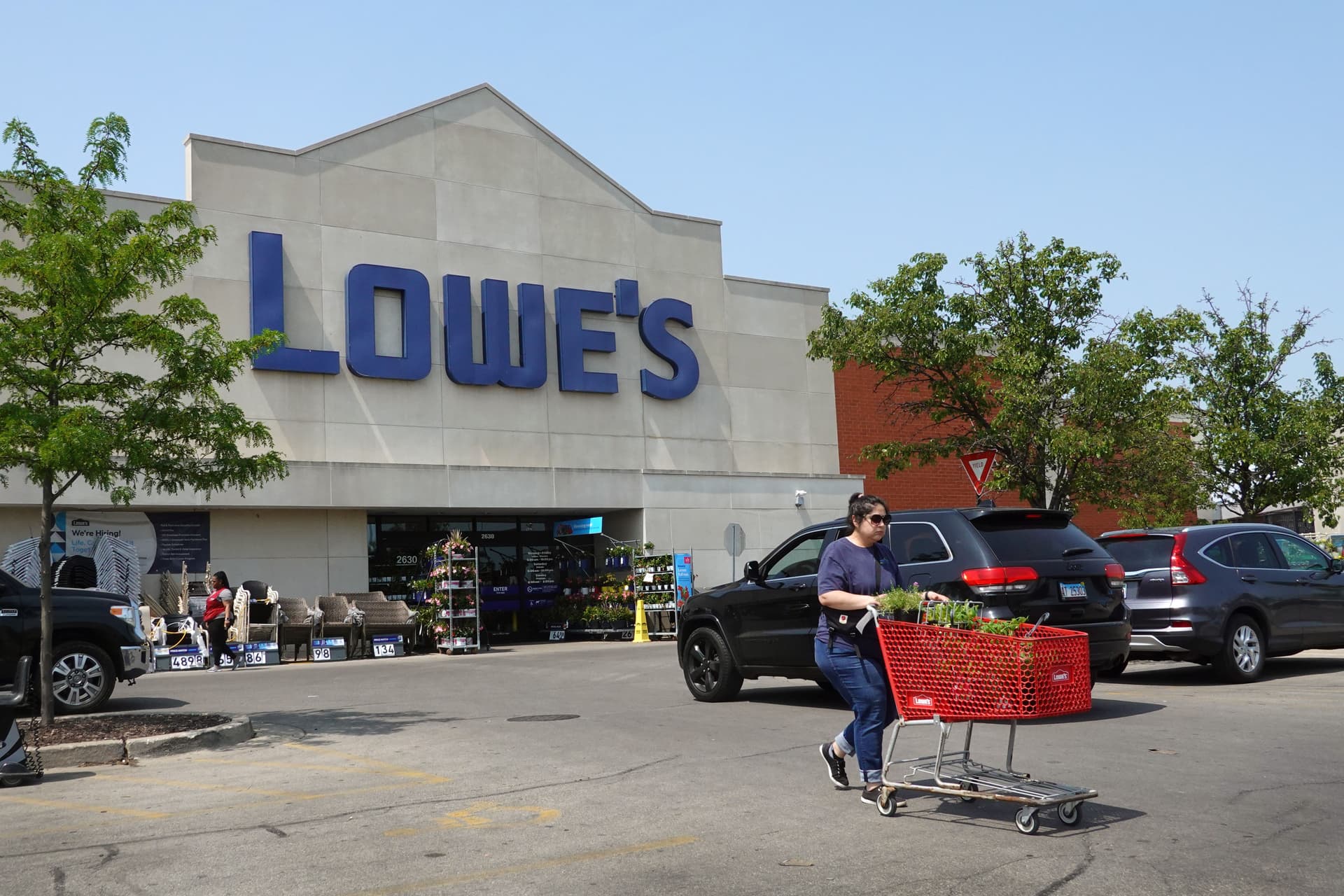DoorDash expands non-restaurant deliveries with Lowe’s partnership
Lowe’s is the delivery platform’s first home improvement partner.

Scott Olson/Getty Images
• 3 min read
These days, DoorDash delivery drivers aren’t just toting around takeout orders. Many so-called “Dashers,” to use the company’s parlance, now deliver a wide range of products, and this spring an increasing number of them are hauling bags of mulch to customers.
The delivery platform entered a partnership with Lowe’s earlier this month, and the hefty lawn care item is a favorite among customers, according to Fuad Hannon, VP of new verticals at DoorDash.
The partnership is the company’s first foray into the home improvement category and the latest addition to its growing portfolio of non-restaurant partners, a part of the business that it’s made a concerted effort to expand in recent years.
“We’ve really been pushing into becoming a multi-category company,” Hannon told Retail Brew. “That started with convenience, with Walgreens and CVS and a bunch of others. Then we moved into alcohol, grocery, and, increasingly, into retail.”
The platform now serves more than 150,000 non-restaurant stores, up from 100,000 last year, and 1 in 5 active consumers have ordered from one by the end of 2023. Other big names in DoorDash’s non-restaurant portfolio include Best Buy, Vitamin Shoppe, Sally Beauty, MAC Cosmetics, and pet supply chains such as Petco and Pet Supplies Plus.
But taking on new delivery partners requires some adjustment, Hannon explained, and each category comes with “a lot of idiosyncrasies.” On the fulfillment side, for example, the larger items available at Lowe’s require a delivery driver with a properly sized vehicle.
Behind the scenes: Yet fulfillment is just one aspect of how DoorDash tailors its approach for each retailer. In the case of Lowe’s, the size of the store and the wide range of its products means both customers and Dashers need some extra help navigating the pick-up and delivery process.
Retail news that keeps industry pros in the know
Retail Brew delivers the latest retail industry news and insights surrounding marketing, DTC, and e-commerce to keep leaders and decision-makers up to date.
Hannon said the company has invested in technology to make its app more searchable, so that customers can find the right item among Lowe’s selection of 80,000 products. On the employee side, he added, DoorDash has invested in back-end technology to help Dashers navigate stores with large physical footprints, so they can figure out which items to get first, second, and third.
For the moment, the platform is limiting deliveries from Lowe’s to smaller items targeted at DIY customers. In other words, it’s currently not delivering lumber or even lawnmowers. But Hannon noted that it’s possible that DoorDash could someday expand its offerings. “There’s certainly a world that I can imagine where we will continue to evolve our fulfillment and our technology and our partnership with merchants to be able to enable that type of delivery,” he said.
Profitability over time: The expansion into new types of deliveries appears to be paying off: In the fourth quarter, total orders jumped 23%, and revenue was up 27% year over year.
“We worked really closely with our merchant teams and with our logistics, technology, and finance teams to ensure that we have a path where the economics on these deliveries work,” Hannon said.
Whether these new verticals prove profitable is another question.
In a recent earnings call, DoorDash CFO Ravi Inukonda said, “There’s a question if these businesses are going to be profitable for us. But when I look at the data, I have no doubt in my mind that all parts of our new vertical business [are] going to be profitable overtime.”
Retail news that keeps industry pros in the know
Retail Brew delivers the latest retail industry news and insights surrounding marketing, DTC, and e-commerce to keep leaders and decision-makers up to date.